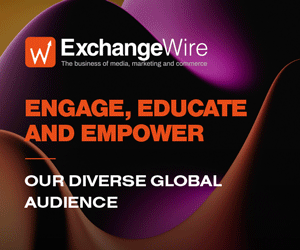Diffiniti MD, Ben Wood, On Ad Exchange Strategy, The Importance Of Usable Data And The Move To Audience Buying
by Ciaran O'Kane on 11th Feb 2010 in News
The holding agencies are busily putting together exchange strategies, as they look to deliver better campaign performance for clients. Some are building out their own platforms; while others are partnering with technology companies. There does seem to be a real appreciation - in the senior ranks at least - of the changes happening in the online display market. It hasn’t been obvious thus far what the agencies are planning. But the arrival of the DSPs and the release of Google's new Adx platform seems to have concentrated the minds of some senior holding company execs, pushing exchange trading to the forefront of actionable items.
ExchangeWire spoke to Ben Wood, Diffiniti MD, who is leading up the exchange strategy across the Aegis Media group. Here he discusses the shift of online display spend to automated trading platforms, the importance of scaled and usable data, and the efficiency of the exchange buy.
Do you think that large European holding companies like Aegis are now seeing ad exchanges as an efficient channel to buy ad inventory?
BW: Yes and no. We absolutely acknowledge that ad exchanges are the future of our trading model, short term in the online space and longer term we see a future where potentially all media is traded via exchange. Right now however, we are taking a pragmatic approach. In Europe specifically we are waiting for the right balance of quality and quantity of local inventory before the channel becomes a mainstay. Additionally, we need to be sensible and measured in the ways that we scale our data capability before we seek to make the most of what will become a huge opportunity. Just using exchanges to buy cheap inventory, without the data element, is not making the most of the opportunity.
Do you think that trading on ad exchanges makes it easier to leverage agency and client data to deliver better campaign performance?
BW: Absolutely, to us that’s the heart of the opportunity. Data is the single most important piece of the puzzle - and the large holding groups, with their access to client & publisher data are in the prime position to realise the potential of the market.
What in your view are the key advantages of buying inventory through the ad exchanges?
BW: The price flexibility, longer term the volume opportunity, the evolving bid model, the transparency, and finally the ability to optimise in real time against core client KPI’s.
Brand safety is a primary concern for most European advertisers when running display campaigns. Is enough being done to ensure brand safety on ad exchanges?
BW: I think so – it’s certainly a step change from the days of blind networks. Agencies should be looking to add their own layer of value-add, regarding brand safety, as part of whatever proposition they take to market.
Is placement and context less important than audience? Could this be a key driver in shifting spend to ad exchanges?
BW: Data means the exchange opportunity is an audience opportunity. What’s funny is that we talk like buying audience over context is something new, when in fact it’s been the way TV has been traded for many years. I think we’ll move to a market where both context and audience targeting are important. For example, brand advertisers will always want portal takeovers, and big financial advertisers will always seek out the FT.
Does Aegis have an exchange strategy? Are there plans to devote more resource to developing this area of the business?
BW: Yes & Yes. Watch this space. However, we’re determined not to rush into the space blind, and we’re not going to over-claim capabilities ahead of scaled and robust data and technology investment. We’re pretty confident that this approach will see us where we need to be within the next months.
Do you think brand campaigns could work as well as DR on ad exchanges?
BW: The ability to segment and target discreet audiences mean BOTH brand and response campaigns are ideally suited. However, right now creative options are a little one dimensional and so we expect the channel to skew towards DR. With more brand orientated creative options and video, the brand opportunity in the channel will be fully realised.
What do you think are the key difficulties in moving an agency toward automated media buying? Is it the lack of ad exchange trading experience in agency world? Is it a lack of technology?
BW: Both are an issue, but frankly, both can be bought, licensed or acquired. I think the key difficulty short to medium term will be in scaled and usable data – I think it’s easy to forget about this key ingredient, yet its acquisition (for agencies) is potentially a legal and strategic mine field.
Do you think the arrival of DSPs into the market will help agencies bridge this technology and skills gap?
BW: Absolutely, although platform differentiation is limited right now and the market is growing so quickly that the likely consolidation between players and media groups is likely to throw up some challenges in the future.
How do you see the European exchange space developing over the next twelve months?
BW: More volume, more opportunity, more hype, and more talk!
AgencyDisplayDSPExchangeProgrammaticTargeting








Follow ExchangeWire